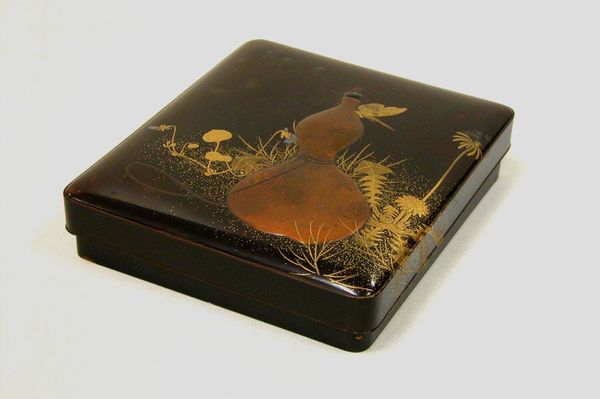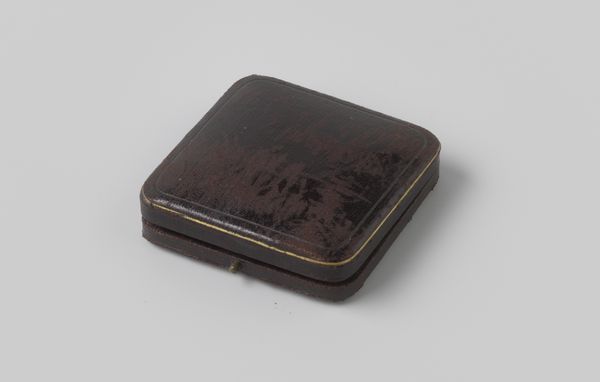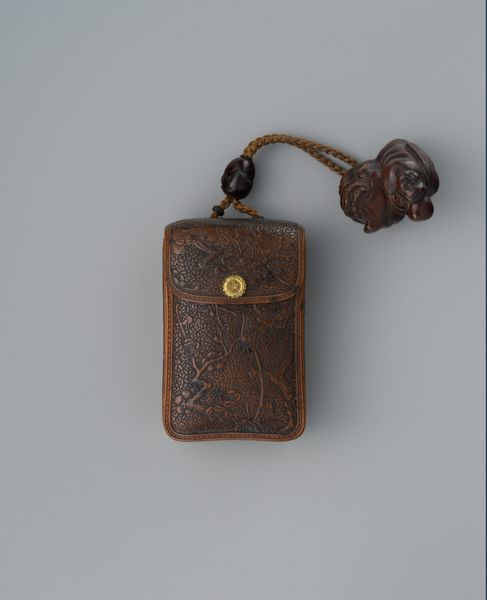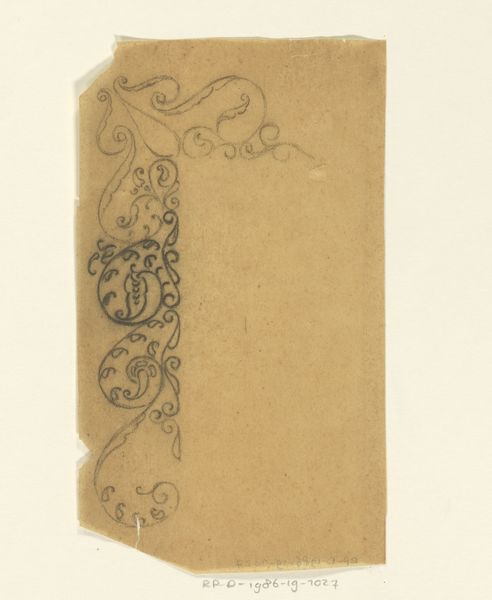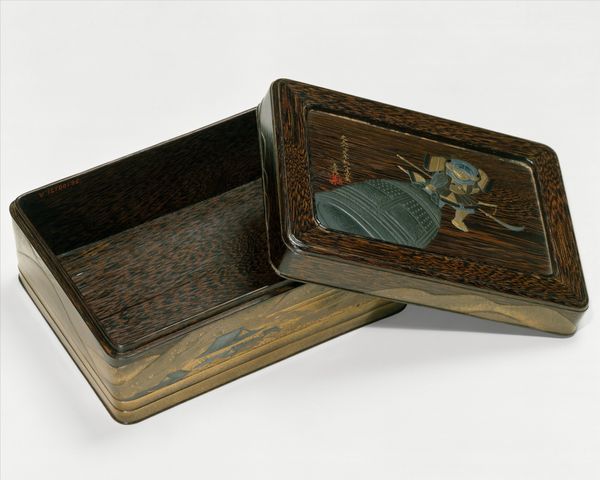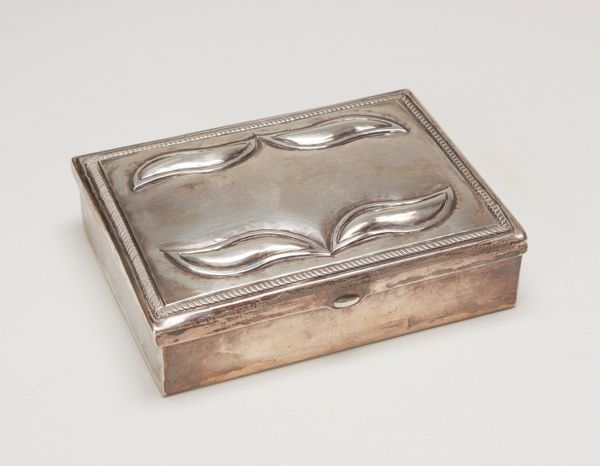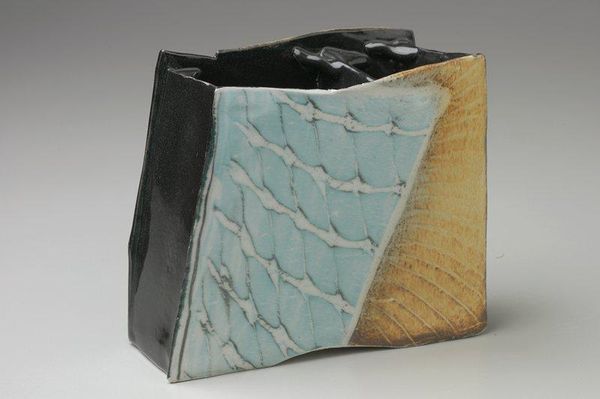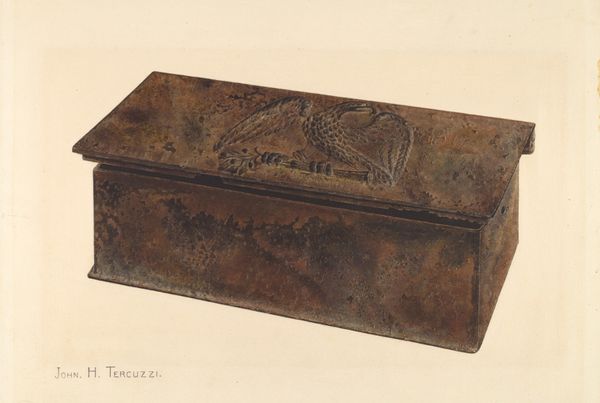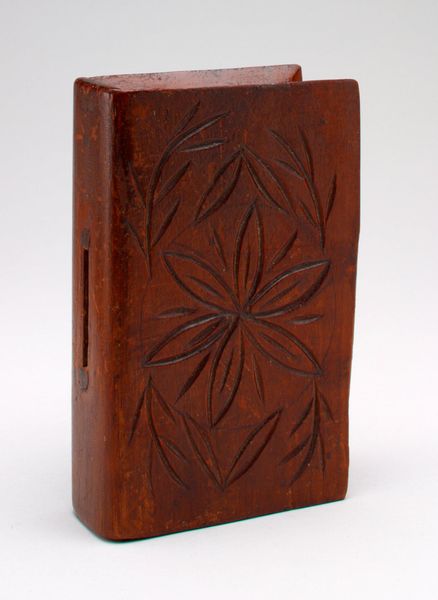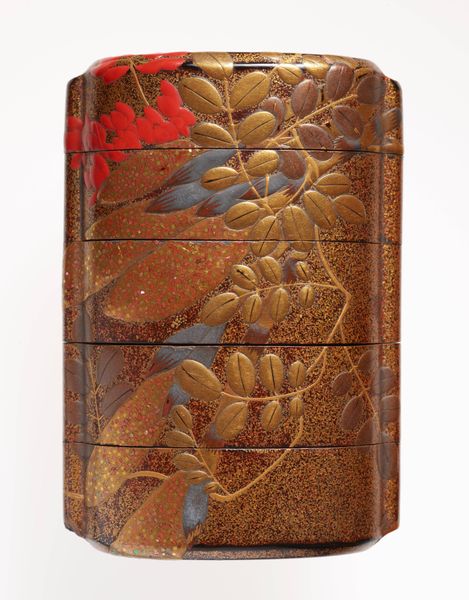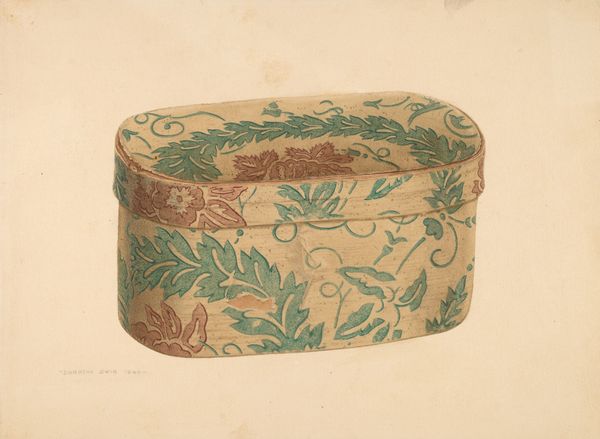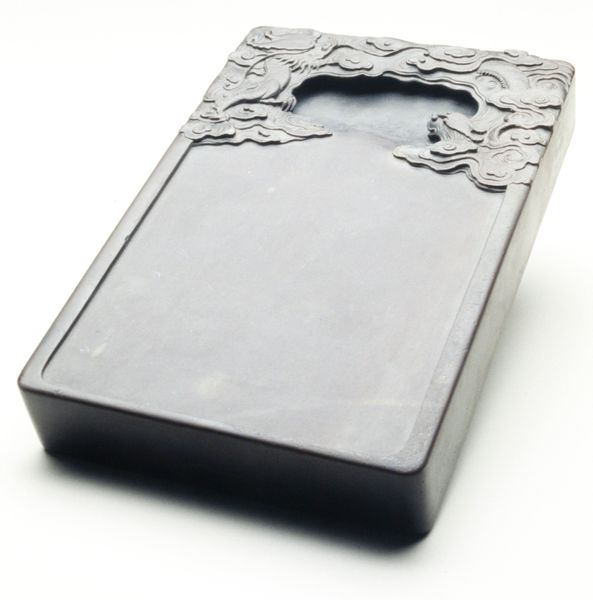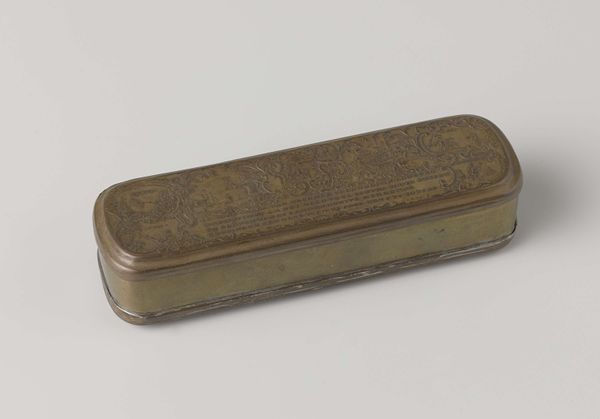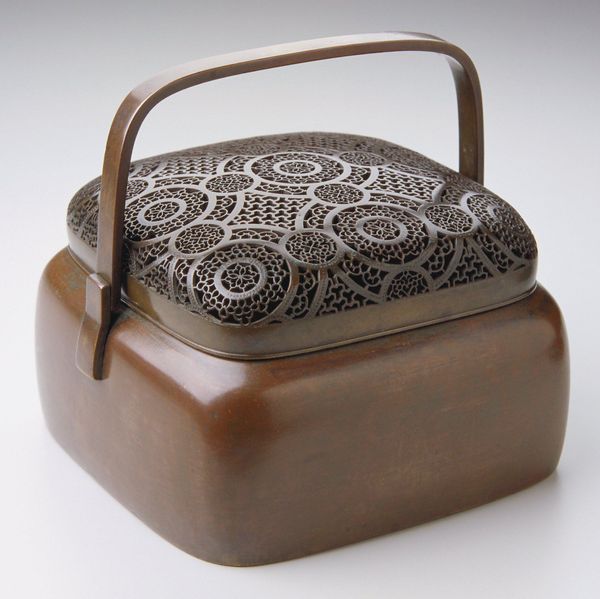
carving, ink
#
carving
#
asian-art
#
ink
#
china
Dimensions: 7/16 x 4 3/16 x 6 1/8 in. (1.11 x 10.64 x 15.56 cm)
Copyright: Public Domain
Curator: It gives me a feeling of quiet strength; it’s a rectangle, so simple in form, but that gorgeous light green jade color. There's so much texture, especially where that carving peeks through like a shy moon over stormy waves. It makes you wonder, what secrets did it hold? Editor: Precisely, you’ve touched on its intimate immensity. What we’re viewing is an Imperial Ink Stone, crafted from jade during the reign of the K'ang Hsi Emperor, specifically sometime between 1662 and 1722. This is more than just a tool, it's a statement of artistic prowess and material hierarchy. Curator: And the purpose wasn’t purely functional, right? Jade, like you said, screams luxury and the best materials. Like holding concentrated authority. I bet if you put your hand on it you would feel its stories, right through your fingers. Editor: Indeed, the stone presents a rich formal schema, not least in its smooth planes disrupted only by the shallow ink pool and stylized wave carvings. Note how the carving seems both integrated and yet slightly detached, offering a formal study in contrasts and complements. This deliberate choice directs the hand, mind and even the ink itself towards structured channels of expression. Curator: What’s cool is thinking about what kinds of ink the K'ang Hsi emperor chose. Each ink, just as curated as the tool used to grind them. Like how someone today curates their favorite pens or art programs. It’s always been such a sensory part of creativity! Editor: An inkstone such as this reflects the core formal considerations central to Chinese literati culture, acting not just as a tool but a vital component within an orchestrated totality that included calligraphy, poetry, painting and indeed the emperor’s authority itself. Looking at this, its dimensions, material properties and skillful design remind us that every line begins not just with thought but intention given tangible shape. Curator: Thinking about the Emperor meditating as the waves crash—I would love to time-travel back to get the chance. So that’s the K'ang Hsi "Imperial Ink Stone." So simple but the most stunning thing you’ve seen. Editor: And let us leave the listener with the profound, subtly crafted structure within so they may better discover more artwork, that waits to enrich their eyes.
Comments
minneapolisinstituteofart about 2 years ago
⋮
Sung-hua stone from Chi-lin, with its typical green tone, was reserved almost exclusively for imperial use during the K'ang-hsi (1662-1723), Yung-cheng (1723-35), and Ch'ien-lung (1736-95) periods. The reverse of this horizontally striated ink stone has a brief engraved couplet written in the hand of the K'ang-hsi emperor. It reads: "used in tranquility this inkstone will last many lifetimes." The poem is followed by two rectangular seals of the K'ang-hsi emperor. The obverse is carved in relief with the design of a leafy peach floating upon waves. The peach is carved out as the "water pool" for the ink to collect in. The two most noteworthy carvers of ink stones in the K'ang-hsi imperial ateliers were Chin Tien-yang and Ku Kung-wang, one of whom likely carved this fine stone. It was customary for imperial artisans to remain anonymous, and all imperial Sung-hua ink stones are unsigned.
Join the conversation
Join millions of artists and users on Artera today and experience the ultimate creative platform.
